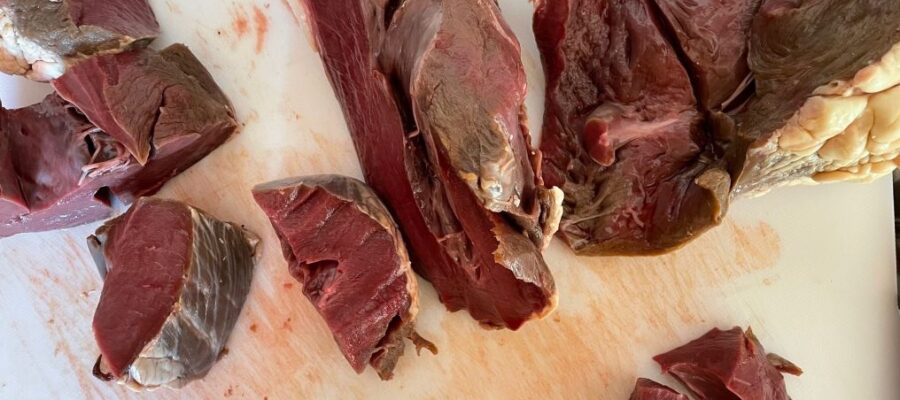
Harvest Health: Navigating Seasonal Dietary Changes for Dogs
Updated: March 2024
Just as we humans adjust our wardrobes and routines with the changing seasons, our dogs may also experience shifts in their dietary needs. From fluctuations in activity levels to the availability of seasonal ingredients, understanding how to fine-tune your dog’s nutrition throughout the year is crucial for their optimal health and well-being. In this post, we’ll explore the signs to watch for, seasonal adjustments to consider, and practical tips for keeping your dog thriving all year long.
Recognizing Signs Your Dog’s Dietary Needs Might Be Changing
Before diving into specific adjustments, it’s important to know how to recognize if your dog’s needs are shifting. Here are some key indicators:
- Appetite Fluctuations: Noticeable increases or decreases in appetite might suggest a need to re-evaluate their food intake.
- Weight Changes: Monitor your dog’s weight regularly. Unexplained losses or gains could signal a seasonal dietary imbalance.
- Digestive Issues: Changes in stool consistency, like diarrhea, constipation, or irregularity, can point to diet-related sensitivities.
- Energy Levels: Unexplained lethargy or hyperactivity, especially when the weather changes, might be linked to their nutrition.
- Coat and Skin Changes: A dull coat, excessive shedding, or skin irritation could indicate nutritional deficiencies or seasonal allergies.
How Seasonal Changes Impact Your Dog’s Diet
- Temperature & Metabolism: Colder months may lead to increased calorie burning as your dog works to stay warm, especially in active breeds like Siberian Huskies. Conversely, heat waves can decrease appetite, potentially more drastically in lower-energy breeds like Bulldogs or Basset Hounds.
- Activity Levels: If walks become shorter due to extreme cold (explore how to keep your dog safe in winter weather) or playtime ramps up during the warmer months, food intake may need to be adjusted accordingly.
- Seasonal Allergies: Just like us, dogs can suffer from allergies triggered by things like pollen or ragweed, impacting their overall health and potentially their diet.
- Availability of Fresh Ingredients: Embrace the bounty of each season by incorporating dog-safe fruits, vegetables like carrots and celery, and herbs when available.
Seasonal Dietary Adjustments For Dogs
- Fall & Winter Focus: As temperatures drop, ensure your dog’s diet provides adequate protein and healthy fats for energy and warmth. Consider slightly increasing portions, supplementing with warming foods like pumpkin or sweet potato, or adding a boost of protein with a sprinkle of ChowPow Beef Heart Powder.
- Spring Considerations: Watch closely for signs of allergies and adjust their food if sensitivities arise. Spring cleaning extends to your dog’s diet as well! Ensure fresh water and consider lighter meals as the weather warms.
- Summer Adjustments: Hydration is paramount! Here are some ways to boost hydration – by adding it to wet food, broth-based toppers, or adding water to kibble increase intake. Offer smaller, more frequent meals during extreme heat to avoid overwhelming their system.
Additional Tips for Optimal Dog Nutrition When The Seasons Change
- Hydration Matters: Access to fresh, clean water is essential year-round, but especially during temperature extremes.
- Antioxidant Boost: Seasonal berries, apples, and other dog-safe produce offer an antioxidant boost to combat environmental stressors.
- Exercise is Key: Regular exercise, adjusted for the weather, supports weight management, joint health, and overall well-being.
- Vet Consultation: Always consult your veterinarian before making significant changes, especially if your dog has underlying health conditions.
FAQs About Seasonal Diet Changes
- Should I switch my dog’s food with every season? Unless your dog has specific sensitivities, drastic changes aren’t usually necessary. Gradual adjustments or seasonal toppers might be more suitable.
- What are dog-friendly seasonal ingredients? Fall offers pumpkin, sweet potatoes, and apples. Spring and summer bring berries, melons, and cucumbers (in moderation).
- Can seasonings enhance my dog’s meals? While a sprinkle of dog-safe herbs can add flavor, avoid seasonings containing salt, onion, garlic, or other harmful ingredients.
Conclusion
By understanding how the seasons influence your dog’s needs and making subtle adjustments, you’ll empower them to thrive year-round. Remember, a balanced diet, fresh water, and regular exercise are the cornerstones of canine health, no matter the weather!






